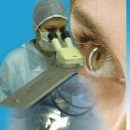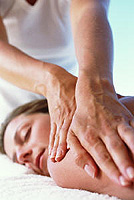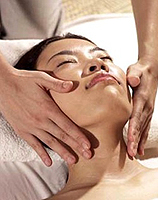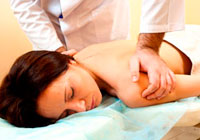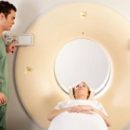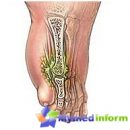Ultrasound therapy is one of the methods of physiotherapeutic treatment, which has a mechanical, thermal and physico-chemical impact on the human body. Ultrasonic therapy is used in the treatment of seborrheic skin, cellulite, to remove scars.
Content
Concept of ultrasound therapy
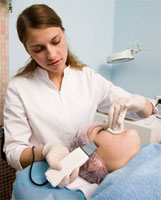 Ultrasound therapy is one of the varieties of medical factors of mechanical nature (they include massage, vibration), which are used as a method of physiotherapeutic treatment of various diseases.
Ultrasound therapy is one of the varieties of medical factors of mechanical nature (they include massage, vibration), which are used as a method of physiotherapeutic treatment of various diseases.
Ultrasound is an elastic mechanical oscillation of a dense medium with a frequency above 20 kHz. Ultrasound waves propagate in the form of longitudinal waves and cause compression and stretching cells. The greatest absorption of ultrasonic energy occurs on the interface interface and in dense tissues.
Ultrasound Action Mechanisms - Mechanical, Thermal and Physico-Chemical.
With a mechanical mechanism of exposure to ultrasound causes cell oscillations forward, backwards. For example, at an ultrasound frequency of 880 kHz, cell oscillation is 880 thousand times per second. As a result of ultrasound therapy, there is a massage at the cell level, the permeability of cell membranes increases, which leads to an improvement in cellular exchange, besides, a compacted tissue is dissolved during cellulite.
With thermal effects, a local increase in temperature in tissues per 1-2 degrees occurs, which causes acceleration of metabolic processes by 13%. Physico-chemical impact related to the restructuring of intracellular structures, due to which the generation of enzymes is enhanced, the process of cell division is stimulated, collagen, elastin, is activated. As a result, scars, sucks, fibrous tissue with cellulite occur.
When carrying out ultrasound therapy, a stable (fixed position of the emitter) and labile (moving the radiator in the exposure zone) of the technique can be used.
Main readings and contraindications for appointment of ultrasound therapy
Indications for ultrasound therapy:
- Older leather
- Package, seborrheic leather
- Body Correction (Cellulite 3-4 Stages)
- For the removal of scars
Contraindications for ultrasound therapy:
- Ischemic disease, hypertension
- Benign face diseases
- blood diseases, inclination to bleeding
- Acute infectious process, feverish states, acute inflammatory processes
- pregnancy
- tuberculosis
- gastric ulcer and 12-rosis
- thrombophlebitis, thrombosis, varicose disease
- Tumors malignant, benign, inclined to growth
- Vascular insufficiency, coronary heart disease, angina, hypertensive disease (above 2nd stage), flickering arrhythmia
- thyrotoxicosis 2 and 3 stages, pronounced forms of endocrinopathies
- Diesefal pathology with crishes
- Sugar diabetes, severe form
- Leather damage, skin infection, inflammation, neust
- Tissue swelling of all degrees and postoperative
Positive effects of ultrasound
Many ultrasound effects were widely used in medical practice. Phonoforesis - introduction of medicinal cosmetics in fabric. As a result of the combination of phonophores and various therapeutic effects, ultrasound therapeutic effects are enhanced. Significant progress for using phophoresis in cosmetology has arrived after creation in the mid-90s of cosmetic gels for ultrasound based on algae, ginseng, jojoba, etc. Phytoextracts are transported to the dermis and hypoderma due to hydrolyzed fiber.
The structure of hydrolyzed fibers makes it possible to penetrate these biologically active substances into different layers of skin and help solve many cosmetic problems. With their help lifting, copery treatment, acne, pigmentation, cellulite.

